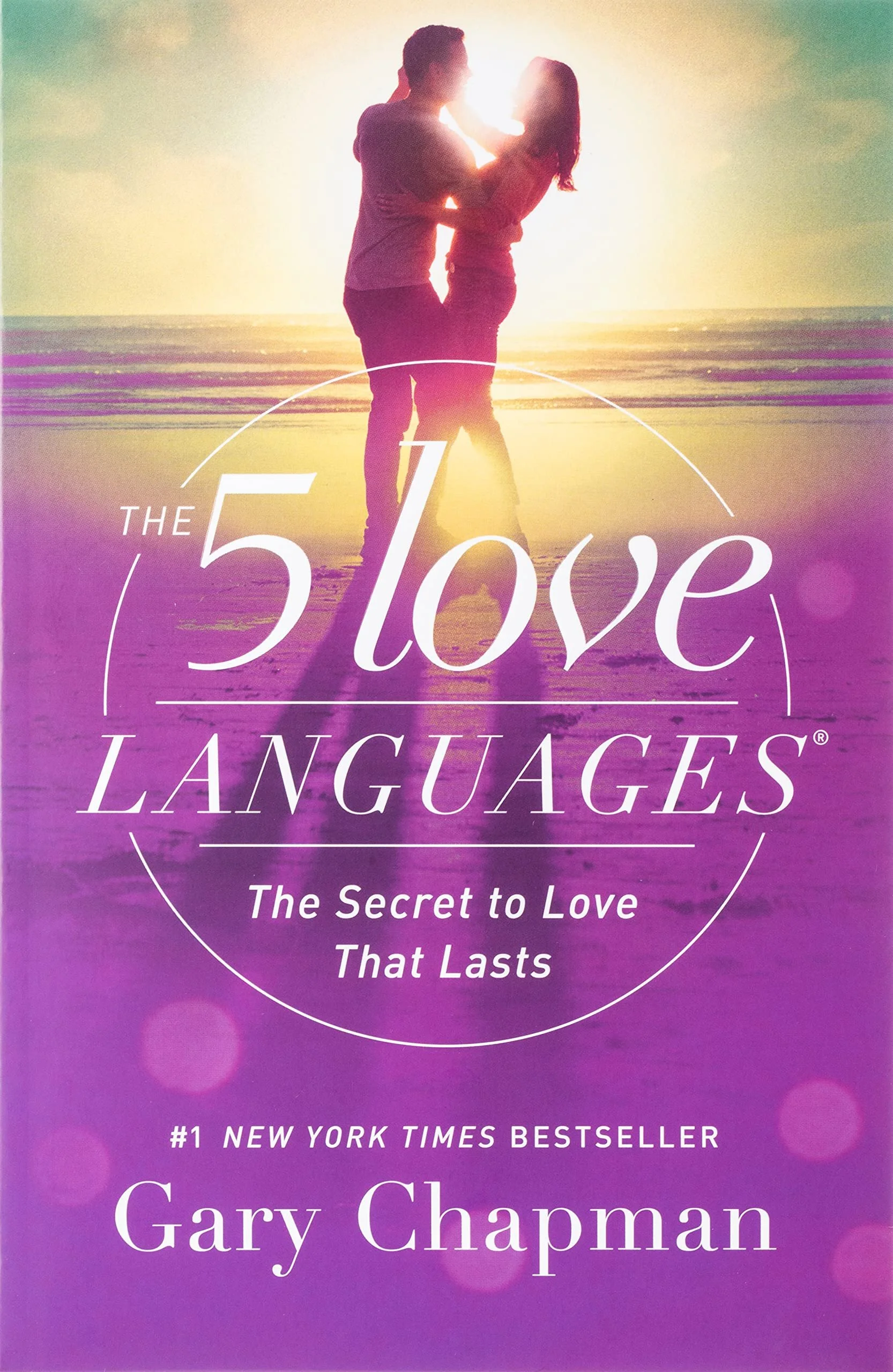Are You a Lover or Fighter?
We've all heard the phrase, "You are your business". If your personal life with your loved ones is strained or tense that can bleed into your business. Your closest relationships have an impact on you and how you show up in the world, whether that be at home, in your business, or with others in general. I’d like to share some concepts and resources that have been critical to supporting my most important relationship, my partner. They’ve also been helpful in my coaching practice as well as with clients, team members, peers, and friends. By knowing ourselves and what makes us tick, we can show up for others in an even better way. I invite you to check them out and learn more about them. They’ve all been valuable to me and hopefully, they will be to you as well!
First, are you familiar with the 5 Love languages?
The Five Love Languages: How to Express Heartfelt Commitment to Your Mate by Gary Chapman, was released in 1992. My partner and I were introduced to this book many years ago and it has supported our relationship ever since. Long-term relationships take a lot of work. By knowing our love languages and how we prefer to give and receive love, we better understand what is meaningful in our life when engaging with loved ones. These insights can be applied to people in our life or business. Yep, you heard me right. Love Languages can be informative when interacting with clients or team members too. They can even be useful when engaging with close friends in your circle. Awareness of our love languages can create the opportunity for an even better understanding of ourselves and those we engage with. Interested in learning yours? If so, you can take the brief quiz to learn your love languages for FREE.
The 5 Love Languages
Acts of Service
Quality time
Receiving Gifts
Physical Touch
Words of affirmation
Did you take the quiz? If so, which one was your top love language?
I hope you're still with me and are interested in where this is going. If so, please understand. I’m not proposing you start sending the Love Language quiz link off to clients and team members to see if they like Receiving Gifts or Acts of Service. Haha! That's not the gist here. For example, Physical Touch is not a conversation you want to jump into with clients or team members. Unless you're a massage therapist, of course. Heh! (And besides, aren't Acts of Service already a part of your business? ;)
However, hear me out. Understanding how clients and team members feel about acceptable types of physical touch, like hugs and high-fives can be very valuable. Not everyone likes to give and receive hugs and some might not be that into a more casual high-five either. You can use this information to get creative in the ways you incorporate questions into your process that allow you to understand what they might prefer.
Wouldn’t it be nice to know if your client preferred to spend Quality Time with you in-person or on a video call rather than getting texts or emails from you every few weeks or months? What about if your virtual assistant preferred Words of Affirmation over $10 gift cards that you think are great gifts but they don’t want to use? I mean, gift cards are pretty sweet, unless they are to a place the person doesn’t want to support. Then it can get a bit awkward. They are appreciative of the gift but don't feel comfortable mentioning that they'd prefer positive reinforcement or mentorship over supporting that big coffee chain around the corner. Maybe instead of Words of Affirmation, they would rather spend Quality Time with you to learn more about the business to help them grow. You won't know unless you ask.
Now, for couples, Chapman also offers a cool, free app called Love Nudge, (Available at the Apple Store and Google Play) that sends prompts or “nudges” to you and your partner throughout the day, based on your love languages. Pretty neat offering! (And I'm not an affiliate or anything btw)
Ok, now that we’ve discussed love languages. Have you ever thought about what might be your Fight Language?
Recently, I came across a video in my feed by Jay Shetty where he posits that we not only have love languages but that we also have fight languages. Watch this #shorts video explaining Fight Languages.
Fight Languages
Now — Wanting to hash it out together now in the present moment.
Later — Pausing to reflect and then coming back to discuss after processing.
To summarize the video, Shetty tells this brief story about the two different fight languages he and his partner discovered during their relationship. He explains that he likes to jump in and discuss it right then and that his partner prefers to pause and reflect before coming back together to talk after processing it. He realized that her fight language is better than his and they have gone on to use her style ever since. I watched this and was blown away. I had to watch it a second time because it resonated with me so much. Then I walked up to my wife and showed it to her without saying a word. I wanted to show her that we were not alone, that another couple had a similar challenge in their styles or what I now knew as "fight language". You see, my wife's fight language is the same as Shetty’s partner and mine is the same as his. Basically, playing this video was my quiet, humble way of conceding that her fight language was better than mine. Knowing that there are other couples in the same position in their relationship was not only empowering, and enlightening, it was like a weight had been lifted. We were not alone. Knowing we're not alone helps ease some pressure, doesn't it? Plus, we now had a new language to help clarify how we can communicate better.
On a side note, what has been interesting to me is how these “fight languages” are so similar to our thinking styles. My wife is a “think to talk” style and I am a “talk to think” style. She prefers to think and process her thoughts before talking whereas I prefer to talk my ideas out and workshop them. They are both acceptable and neither is wrong. Knowing that we differ in our thinking styles has been supportive of the way we engage with each other. When it comes to “fight language”, there has to be a compromise to our method of engaging in our relationships. Labeling things isn't always a positive or productive exercise in life. However, knowing your love and fight languages provides tools to develop and nurture those relationships for years to come.
Next, have you heard of the Wheel of Consent?
Recently, our couples counselor shared a great resource for my wife and me to add to our toolkit as we continue growing and nurturing our relationship. She shared the Wheel of Consent which is based on the book, The Art of Giving and Receiving: The Wheel of Consent by Dr. Betty Martin. From Dr. Martin’s website, “In this book, Betty guides the reader through the Wheel of Consent framework, and shares practices to help us recover the ability to notice what we want and set clear boundaries. In these practices, we discover that the Art of Giving includes knowing our limits so we can be more generous within those limits, and not give beyond our capacity. We also discover that the Art of Receiving invites us to notice and ask for what we want. This knowledge, and its embodied practice, is foundational for creating clear agreements and bringing more satisfaction into relationships.”
Thankfully, consent is a topic that is being discussed and practiced more. Through the work of people like Dr. Martin, we are gaining tools to educate ourselves and take action on how we give and receive with consent. These statements and questions below are simple ways to initiate a conversation around consent that can be used in all kinds of venues, whether in your personal or professional life. I watched a funny, new stand-up performance last night, called Jokes by Whitney Cummings where she jokes about consent and how it plays a comical role in her relationship with her "younger" boyfriend. It's a hysterical bit. Consent can be a much easier conversation, and even easier to add to a conversation -- with practice. I invite you to practice these simple, everyday phrases Dr. Martin uses in her examples as you engage with people and see how it affects your relationships. Here are some common phrases you could hear in a client call. For example, "May I ask you some questions about your budget range and the timeline for this project?", or perhaps, "Will you be sending over a statement of work after our discovery call today?" These are just a couple of examples of how we can practice consent with clients. What if we practiced this with everyone we encountered?
The Four Quadrants
The Taking Quadrant — “May I…?”
The Allowing Quadrant — “Yes, you may.”
The Giving (Serving) Quadrant — “Yes, I will.”
The Receiving (Accepting) Quadrant — “Will you…?”
In closing, language is a very powerful thing and can be taken for granted. I recently finished the HBO series, Atlas of the Heart with Brene Brown (based on her book of the same name). In her book and the series, she breaks down how we use language (or words) improperly, how we can use it to create self-fulfilling prophecies we may or may not want, and how we can use language to improve our lives and connect even better with ourselves and each other. Understanding the language we use, whether specific words or actions, is pivotal to our connection and evolution as a society. If we want to see a drastic change in the world, we must use tools such as these to support our growth in life and business and even more importantly, in our relationships. Relationships are what keep us human and community is what keeps us thriving as humans.
I’d love to know your thoughts. Let me know what came up for you in the comments or email me.



